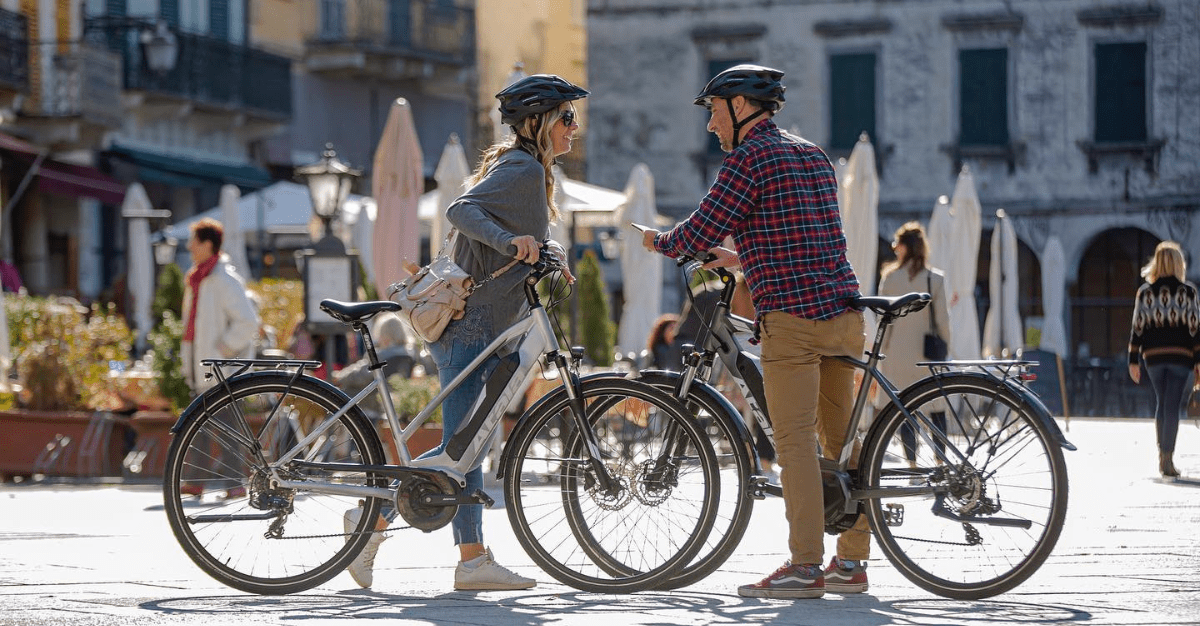Imagine if in your city all the inhabitants began to travel by bike rather than by car.
We would immediately notice some advantages, such as quieter streets, less congested traffic, green areas and open spaces that can be lived in safely.
Not to mention cleaner air, a healthier population and a fuller wallet at the end of the month.
It seems like an idyllic scenario, but it is not at all impossible, on the contrary.
Shimano asked the opinion of three people who strongly advocate the use of bicycles in cities.
The first interviewee is Fernando Garcia, Bicycle Mayor of Madrid.
Garcia, in addition to claiming that he wants to dedicate less and less space to cars, reported that he wants to create more aggregation situations for people, such as spaces to meet, play and communicate.
“In my vision” – Garcia reported – “the city will be increasingly free from cars, more people will cycle, walk and use public transport. At the moment the problem is that the space we dedicate to active mobility and public transport is only about 20% of our roads. The other 80% is dedicated to cars, which account for less than 30% of all transfers in the city. Today the people who cycle are mostly men, young and fit. So there is an exclusion of children, the elderly and the disabled and there are many fewer women who cycle than men. To create an inclusive cycling population we need to present cycling as safe, practical, easy and fun. To do this it is necessary to isolate cyclists from the smog and the danger of riding in traffic. It does not mean that there must be a cycle path along every street but it is necessary to create a complete and perfectly integrated network of streets throughout the city“.
According to Garcia, the problem lies in managing the transition from what is the current norm to what we actually want to become, starting first of all from a protected cycle network.
The difficulty, according to Garcia, does not lie in the size of the city or in the will of the citizens, but in the will of politics to create active mobility and a more livable and sustainable urban environment.
The second interviewee is Catriona Swanson, Head of transport planning in the UK.
According to Swanson: “In a city where more people cycle, the streets are quiet and this encourages even more people to walk and cycle. In these cities there will still be cars and those cars will be able to move more easily. Investigations show that urban centers where bicycles are used a lot, such as Amsterdam, have uncongested traffic, because many short and less important transfers are made by bicycle. Many insist only on protected cycle paths but the creation of low-traffic neighborhoods where the car network is separated from the cycle path would guarantee safe, direct and low-traffic routes for cyclists. Thanks to a greater choice of means of transport for all, people are not forced to use the car. Children, the elderly and those without driving licenses have more options and choices for their travels“.
For Swanson, removing barriers to bike use and making room for cargo bikes and e-bikes would make the community more inclusive. Furthermore, in neighborhoods with low traffic, having fewer cars parked, there is more space for parks, trees and aggregation situations, also benefiting the local economy.
“I children- concludes Swanson- they are more independent because their parents know that they can move around safely, so they will play more in the street and this will create socialization between the parents. When you walk or cycle, you meet neighbors more often and can stop to chat along the way. The positive impact of living in quieter areas with cleaner air is well demonstrated. The increased prevalence of bikes creates low-traffic neighborhoods and healthier, happier communities“.
Finally, he was interviewed Chris Oliver, Professor of Medicine and retired surgeon from Edinburgh, who argues the enormous benefit to society, health and environmental change.
“By keeping physically active for 30 minutes a day you can live longer, currently up to 7 years longer than the average population. Here the population is less physically active than ten years ago, a disconcerting fact. We need to get more people on bikes to reap the health benefits“, reported the Professor, adding that “An increase in the cycling population would have a huge effect on the obesity problem. By cycling regularly you can lose up to 10kg in a year. If you suffer from type 2 diabetes and lose 10 kg this could lead to remission of the disease. Gastric bands and gastric bypasses are expensive surgeries, weight loss from cycling will have a huge health benefit for individuals, saving the healthcare system billions. If remission of type 2 diabetes is achieved, drug use, surgeries and amputations are reduced, while many other conditions improve. It can only be good for everyone, not just for cyclists, but also for the rest of the population. Pollution levels will decrease with major effects on lung health. Mental and physical health will benefit. Your mood improves from the first ride! People will come to work happier and more energetic. But facilities and services are needed: adequate showers, bicycle storage“.
Cycling, therefore, would truly offer benefits to society as a whole, on a physical, mental and environmental level. Furthermore, investments in cycling would guarantee savings both in the pockets of two-wheel lovers and in health services.
Source: Shimano Steps

